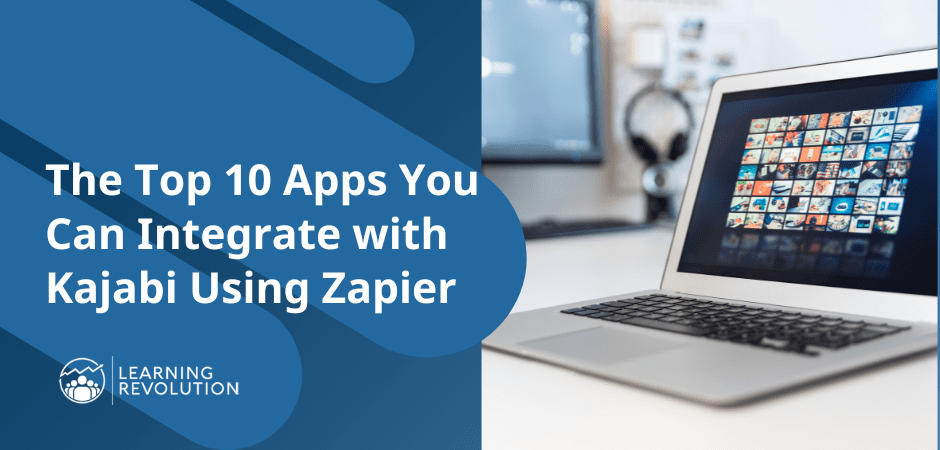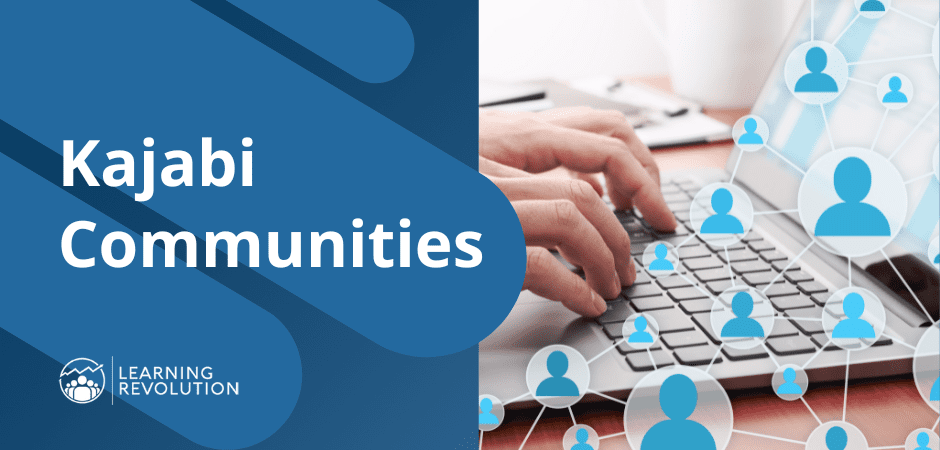

If you are interested in using Kajabi as a platform to create and sell online courses or other digital products, there is a chance you are wondering whether Kajabi pricing is worth it.
After all, when you compare it to platforms like Thinkific and Teachable, which start as low as $29 a month for a paid plan, or even Kartra – Kajabi’s main all-in-one competitor – which starts as low as $79 per month, the jump to Kajabi can seem pretty pricey.
So, whether it’s worth it or not is an important question. In this post, we’ll take a deep dive into Kajabi pricing, consider what you get for what you pay, and help you decide whether Kajabi is the right investment for your business.
Kajabi Pricing Snapshot
First things first, here’s Kajabi’s current pricing, from Basic to Pro:
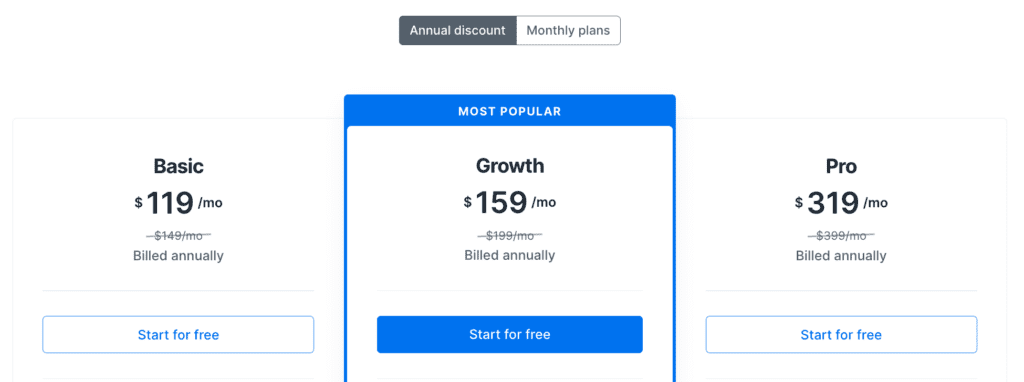

A couple of key things to note:
First, you get a pretty significant discount for committing to an annual plan as opposed to a month-to-month contract. Even at the Basic level, the difference adds up to $360 per year in savings. So, if you try it and like it, it’s best to jump to a Kajabi annual plan as soon as you feel comfortable.
Second, it’s important to note the ways in which Kajabi “throttles” each of the plan levels. Your key limits are around:
Number of products
A product in Kajabi is anything a user has to enroll in, register for, or subscribe to in order to gain access to content or services. That includes courses, but it also includes things like subscription memberships and communities or access to other digital resources, like collections of videos. Note that something can be a product regardless of whether you actually charge for it.
Number of pipelines
Pipelines are Kajabi’s approach to creating and managing sales funnels. They enable you to create landing pages, e-mail sequences, and automations that move your prospects from initial awareness of a product to purchase.
Number of contacts
Contacts are the people you saved contact information for – meaning, at minimum, an e-mail address – in Kajabi. These are prospects for your products but also include people who are currently active in any of your products.
Number of members
A “member” in Kajabi is anyone who has active access to a product, whether they bought it or you gave it to them. For course creators, that’s typically your students; for communities, it’s the members of the community.
Number of sites
A site in Kajabi means a collection of pages and products under a single web domain – e.g., mysite.mykajabi.com, or www.mysite.com, if you take advantage of the ability to have a custom URL.
Number of administrators
These are the people who have access to the back end of a Kajabi site to create pages and products, manage user, and perform other administrative tasks for launching and maintaining your Kajabi site.
Most course creators looking to get started with or move to Kajabi are going to one to pay closest attention to #1 and #4; products and members.
In theory, you could include multiple online courses within a subscription, but if you want to be able to sell multiple courses as standalone products, you’ll need to make sure your Kajabi level matches your plans. Similarly, you need to choose a Kajabi license level that will handle the number of students you have or reasonably expect to get once your course is launched.
Where Kajabi does not limit you at any license level is in the number of landing pages – e.g., sales pages – that you can publish on your site and the number of marketing e-mails you can send (using Kajabi mail, included with all licenses). Kajabi is fundamentally built to sell, and the liberal approach with these elements reflects that.
Kajabi also does not charge any transaction fees for sales of products through its platform (though fees from your processor – e.g., PayPal, Stripe – do apply, as they do with all platforms).
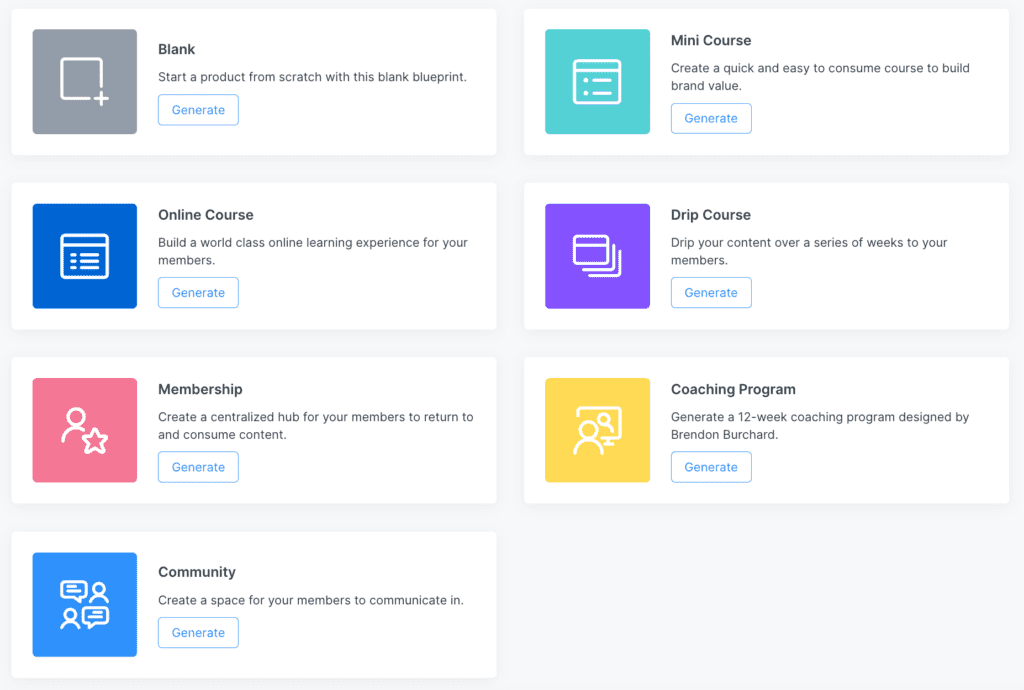

Does Kajabi Have a Free Plan?
You can get 30-days of Kajabi’s Growth plan for free. That gives you access to all of the plans features – not a trimmed down version. A credit card is required and the paid plan kicks in at $199 a month once the trial is up unless you cancel, opt for the lower priced Basic plan, and/or opt for annual pricing (see above).
How does that compare to the Teachable free trial or the Thinkific free trial – two of Kajabi’’s biggest competitors when it comes to hosting and selling online courses?
Teachable Free Trial: Teachable doesn’t make it all that clear, but you get 14 days of their Professional plan for free just by clicking any of the “get started” links on their site and providing an e-mail address (or just go here). No credit card is required for the trial, but after 14-days, you will have to upgrade to a paid plan to keep going. (Full Teachable pricing here.)
Thinkific Free Trial: You can access to Thinkific’s “core” features at no charge – and no credit card – and the company doesn’t charge a transaction fee for course sales even with the free plan. (You will, of course, still pay fees to PayPal or whoever you use to process credit card charges.) The biggest limitation is that you can only create three courses, but that’s plenty for many course creators who are just getting started, and the free plan allows for unlimited students. (Thinkific pricing and free trial here.)
The Basic Plan
As mentioned above, there are key areas where Kajabi places limits on each of its plans, with number of products and number of members being two of the most essential course creators. At the Basic level, you get:
- 3 products
- 3 pipelines
- 1000 members (i.e., students)
- 10,000 contacts
- 1 site
- 1 administrator
For course creators who are just starting out, this is usually plenty. It could easily be a year or more before you outgrow the Basic Plan, and by the time you do, you will likely be generating enough money to more than justify a higher priced plan.
As already noted, even at this level you’ll get the ability to create unlimited pages for your site and send unlimited marketing e-mails. You’ll also have the ability to create assessments that can be added into your courses and access to a range of themes (templates) for setting up your site.
Perhaps most powerfully, the Basic level gives you access to the automations that are one of the most important elements of the Kajabi platform. Using automation, you guide prospective students through your sales funnel, control how and when they access course elements, and lighten your support burden by sending reminders and other prompts.
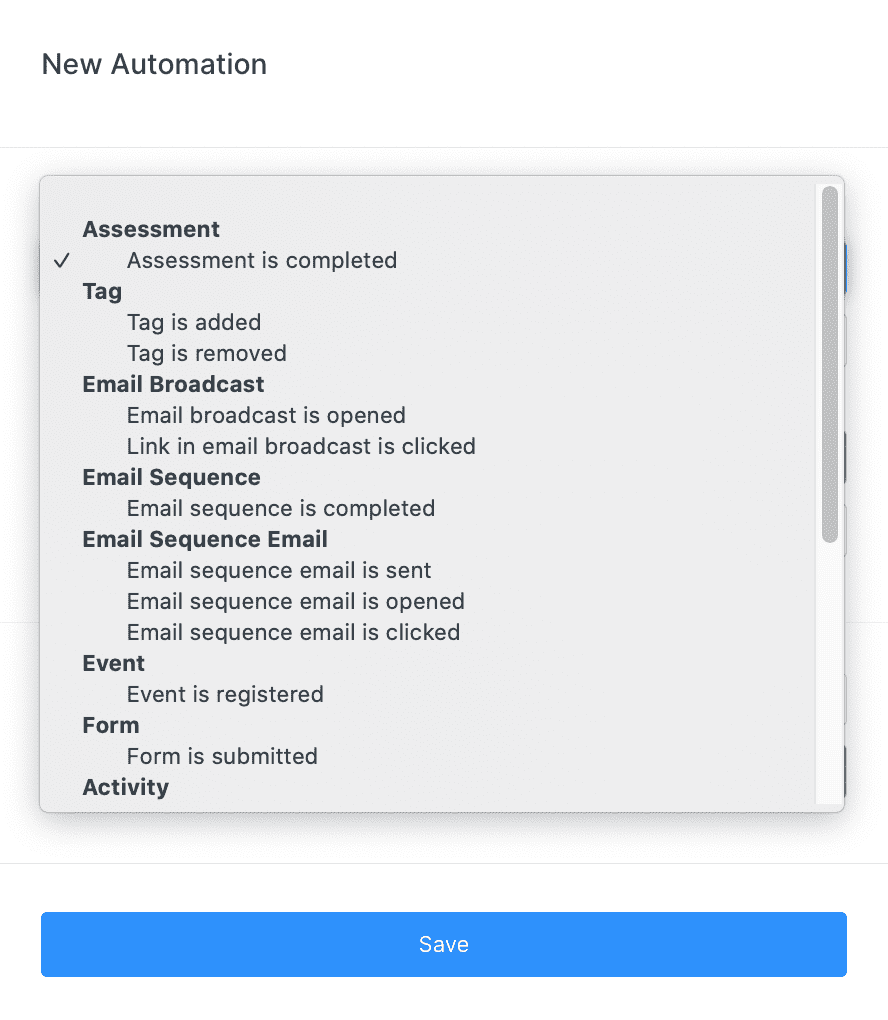

At the basic level, your students/members can also access all of your products through the Kajabi mobile app. This may not seem like a big deal, but most of the best online course platforms in the same general price range as Kajabi do not have a mobile app. That’s also true of major all-in-on competitors like Kartra and Simplero.
Instead, these platforms rely on “responsive” design for users to access course and other content, but this often means the experience is not great. A true app – downloadable in both Apple and Android versions – provides a much better experience for connecting with your users no matter where they are
Finally, it’s really important to note that with the Basic plan you get access to some of the best support in the course platform world. Kajabi Assistant is built in throughout the product to get you to quick answers for any questions that come up as you work on your site. Kajabi University provides a wealth of training on all things Kajabi and the company also hosts regular webinars and other support events, including twice-a-day live online training sessions Monday through Friday.
If all that doesn’t get you what you need, you also have access to Kajabi live chat support.
The bottom line With the Kajabi Basic plan, you really get everything you need to build out a complete, modern looking Web site, create digital products, manage sophisticated marketing and sales campaigns, and deliver a compelling learner experience. And, you get great support in doing it all.
From Basic to Growth
The next step up is from Basic to Kajabi Growth. That obviously involves a jump in Kajabi pricing, so what do you get for the increase?
Mostly, it is a matter of “more” – more products, more members/students, etc. Here’s how that breaks down:
| Basic Plan | Growth Plan | |
|---|---|---|
| Products | 3 | 15 |
| Pipeline | 3 | 15 |
| Contacts | 10,000 | 25,000 |
| Members | 1,000 | 10,000 |
| Websites | 1 | 1 |
| Admin Users | 1 | 10 |
Like I said before, if you need those numbers, it’s because you’ve been successful and grown – which, of course, is why they call it the Growth plan. But it’s not just about numbers. To support your growing business, you also get:
- Increased access to live chat (24/7)
- The ability to remove Kajabi branding from your site
- Access to more advanced automations
- The ability to offer an affiliate program for your products
Those first two are pretty straightforward, but I’ll say a few words about automations and the affiliate capabilities.
Advanced automations in Kajabi means that you can add more conditions to an automation.
So, for example, a standard automation will allow you to say “When X happens, then make Y happen.” Like, when this lesson page is complete, allow access to this live coaching session. With advanced, automations, you could modify this to ““When X happens, then make Y happen, but only if Z is true.” So, when this lesson page is complete, allow access to this live coaching session, but only of the student is tagged “Premium Member.”
Obviously, that can give you a lot of control over managing your users without requiring you to do a lot of work.
Note: As of this writing, advanced automations appear to be available in the Basic Plan, though we have not seen anything from Kajabi indicating this change.
The affiliate plan gives you the ability to enlist other people to sell you products, track their performance, and manage payment of commissions. While Kajabi’s affiliate capabilities aren’t quite as strong, in our opinion, as many dedicated affiliate software platforms, they are quite good and – like most Kajabi features – getting better all the time.
If you are in a position to enlist good affiliates to sell your products, then this feature alone may make the jump to the Growth plan worth it.
From Growth to Pro
For many course and digital product creators, the Growth plan may be as far as you will ever need to go. Let’s face it, with 15 products and 10,000 members, you could be generating some serious revenue. But if your sites are set even higher, Kajabi Pro is your ticket.
Kajabi pricing for Pro is, as might be expected, quite a bit higher. Here’s how the difference breaks down:
| Basic Plan | Growth Plan | Pro Plan | |
|---|---|---|---|
| Products | 3 | 15 | 100 |
| Pipeline | 3 | 15 | 100 |
| Contacts | 10,000 | 25,000 | 100,000 |
| Members | 1,000 | 10,000 | 20,000 |
| Websites | 1 | 1 | 3 |
| Admin Users | 1 | 10 | 25 |
Aside from the higher numbers, the main other difference at this level is that you will get access to edit Kajabi code. With the Kajabi code editor, you can make highly customized changes to website, product, and landing page themes.
Of course, you have actually know how to code – or have access to a professional – to do this, so don’t mess around with the code editor if you don’t. If, however, having this level of control is something your business needs, your going to have to have the Pro level plan to get it.
Kajabi Access
One final, but very important item before we wrap up. Kajabi offers an add-on call Kajabi Access that enables you to double your current plan access levels and access the code editor without jumping all the way to the Pro level plan. You also get 6 one-on-one sessions with a Kajabi Customer Success Manager and early access to all new Kajabi releases.
Unless you feel a strong need for the one-on-one sessions, this option is clearly best suited for people interested in or already using the Growth Plan. Rather than having to pay from $160 to $200 per month extra to jump up to the Pro level, you get a lot more products, members, etc. and code editor access and the on-on-one sessions for just $99 per month.
So, something to consider if the Growth plan is looking like a for you.
So, is Kajabi pricing worth it for you?


Clearly Kajabi is a very powerful platform, and it’s large and devoted user base also makes clear that many people think it is worth it.
But “many people” isn’t you.
If you already balk at the idea of spending $39 or $99 a month on a platform, then Kajabi pricing may seem like a hard pill to swallow. In that case, if you are going to seriously consider Kajabi – and you should – you will need to adjust your mindset.
With a clear strategy and the discipline to take the right steps to build an audience, though, $39 to $99 should be a trivial investment in the end – i.e., you should make many multiples of that month over month, and those fees simply represent a reasonable cost to deliver a professional-level experience for your learners.
Okay – but is paying more than that to get Kajabi really worth it?
When it won’t be worth it
In most cases, Kajabi won’t be worth it if:
- You already have a strong web site and marketing tools in place and don’t have a good business reason to switch. In these cases, you will most likely be better off going with a standalone platform like Thinkific or possibly a WordPress plugin like LearnDash.
- You need sophisticated course authoring capabilities. While Kajabi is very solid as a tool for building courses, it is geared primarily toward videos, text pages, and simple assessments. If you aim to build in a high degree of interactivity, issue continuing education credit, or deliver sophisticated assessments (e.g., with randomization, drawing on question pools, etc.), then it’s probably not your best choice.)
- You need a platform that enables you to import course built in standards-compliant e-learning authoring tool. Kajabi is not SCORM or Tin Can conformant and, as far as I know, doesn’t have any plans to be. (Among platforms in similar class, LearnWorlds is one that does have SCORM support.)
- Your main focus is on selling to businesses (B2B) rather than individual consumers (B2C). While it’s not impossible to do with Kajabi, selling online courses to businesses is really a different ball game than Kajabi was built for. You’d be better off with one of the platforms on this page.
When it will be worth it
In most cases, Kajabi will be worth it if:
- If you don’t have web site and marketing tools (especially e-mail) in place currently or you are dissatisfied with what you have.
- Related to the above, you would like significantly decrease the different types of software you have to use. Kajabi is capable of replacing all of the following (and probably more):
- Landing page builder (e.g., Leadpages)E-mail service (e.g., ConvertKit)Course platform/builder (Teachable, Thinkific)Sales funnel creator (e.g., Clickfunnels)Conversion automation software (e.g., OptinMonster)
- Website builder (e.g., Wix, WordPress, Squarespace)
- Membership platform or plugin (e.g., Mighty Networks)
- Blog (e.g., WordPress)
- Affiliate software (e.g., Post Affiliate Pro)
- Evergreen and live webinar functionality (e.g., EverWebinar)
Of course, keep in mind that each of the specialized software platforms usually has a lot more features and capabilities than Kajabi will have. It’s hard for an all-in-one platform to be best of breed at anything it does. Still, for most digital product sellers, Kajabi is more than good enough in most of these areas.
- In general, if your actual product needs – courses, membership community, etc. – are relatively straightforward and simple, but you would benefit from strong marketing tools to support them without the headaches of bolting together a bunch of different platforms.
| Not Worth It | Worth It |
|---|---|
| Strong site and marketing tools already | No site/tools or dissatisfied with current |
| Sophisticated course needs | Simple course / product needs |
| Using SCORM or Tin Can | Strong desire for less software |
| Business-to-Business focus | Business-to-consumer focus |
Basically, Kajabi gives you a stronger set of web and marketing tools than any of the comparable standalone online course platforms, but it also gives stronger course creation capabilities than all of the comparable all-in-one platforms.
If that sounds like an attractive mix to you – and I find it does to most course creators – then then the answer to “Is Kajabi pricing worth it” is a clear “Yes!”
See also:
Title image by Gerd Altmann from Pixabay
Scales image by Arek Socha from PixabayTable of Contents

